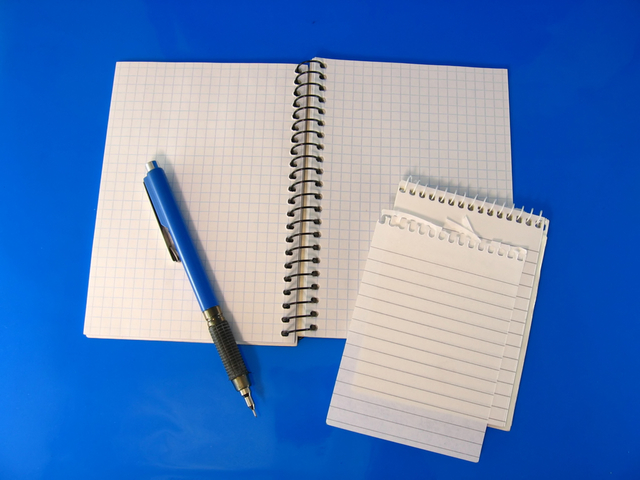
I’ve always journaled in some form or another. I did it to either chronicle my day, get thoughts out of my head that needed to be captured elsewhere (but not publicly), or — more recently — to leave something behind for my children to read after I’m gone. I’ve generally journaled at night, prior to going to bed but lately I’ve added something to that routine.
I’m journaling twice per day — once in the morning and once in the evening. And so far it’s working out great.
Here are some of the benefits I’ve found to journaling twice daily:
It helps me shape my day.
Sure, I have my task managers to help inform me of what I want (and need) to do first thing in the morning. But I’ve found that by getting those ideas out of my head right when I wake up not only jumpstarts my day, but also helps to shape it. Jason Womack has discussed the notion of creating your Ideal Day, and I think that by journaling first thing in the morning that I actually am that much closer to getting to that every single day.
It creates a keener sense of awareness.
By writing things out both in the morning and in the evening I have a greater sense of awareness regarding all the things I’ve got on my plate. I know what I’ve done, know what I want to do, and know what I haven’t done and don’t want to do all through the simple act of journaling twice daily. Journaling has essentially helped me go beyond my to do list, which is exactly where you want to go.1
It helps keep me accountable.
My morning journal entry helps me shape my day, and my evening entry chronicles how the day went. The later entry illustrates what I did — and didn’t — accomplish that day, which serves to create more accountability on my part. There have been times where I knew leading up to the later entry that I still had things to get done that day, so I wind up doing them at that point before making the entry. The increased awareness leads to greater accountability.
It bookends my day nicely.
My day begins and ends in my journal. It’s become a routine, which has actually helped me stick to other routines around it. Things like updating YNAB, flossing my teeth, and so on. Being mindful about my journaling practice has led to a great start and end to every day…no matter what the day has thrown at me.
There are plenty of options that you have available to start your own journaling habit. Some of the best options include:
- Day One: Day One is a journaling app for the Mac for $9.99 and for the iPad and iPhone for $4.99. It syncs across all devices, meaning you can journal anytime and anywhere. It also has a bunch of other additional features that can help you create a journal that you’ll really enjoy sharing now or later on. The ability to add photos, tags, and the like really enhances the journal writing experience, and you can set reminders so that you don’t miss recording an entry — no matter how many you choose to do per day. (You can also create an even greater Day One experience by using Brett Terpstra’s Slogger.)
- A Paper Journal: The Bullet Journal has been a very hot topic as of late, but I’m not referring to that. I’m talking about a plain old writing notebook that you can use to journal regularly. Whether you choose to use something like a Moleskine (or another high-end notebook) or you decide to use something a little less expensive, the idea of journaling on paper can allow you to better connect with your thoughts and ideas without the interference and noise of digital tools. Plus, paper won’t exactly crash on you and doesn’t have any platform compatibility issues, either. If you want to preserve a paper journal over the long haul, don’t go too cheap. Make sure you get a journal that contains paper that will stand the test of time, like acid free paper. (A new notebook on the scene, the Baron Fig, has captured my attention recently. It’s got a very classy look and seems well thought out.)
- Evernote: Evernote can make a great journaling tool. First off, it has so many other uses that it allows for you to spend less time learning how other apps work (like Day One) and stick with one that has so many practical applications. You can also record audio entries, photos to accompany your entries, and tag entries. You can even create notebooks to start separate journals (one for morning entries, one for evening entries, or perhaps even a weekly journal to chronicle your week) and you can sync them across several platforms and devices or keep things local. Evernote also has several companion apps (Evernote Hello, Evernote Food) that allow you to create a truly unique journaling experience. And with the use of the Evernote Smart Notebook, you can use paper to start and digital to finish. (Brett Kelly’s Evernote Essentials covers a lot about Evernote and can get you up and running with this app in very little time. It’s worth a look.)
If you’re not journalling already, then it’s something that is definitely worth exploring. It can actually help you become more productive over the long run by increasing your overall awareness and can enhance a prosperous and mindful workflow. Give it a try — you just may find it can help you out in more ways than one.
Photo credit: teyoo via SXC.HU
1 Speaking of going “beyond the to do list”, we had Erik Fisher on Mikes on Mics this week. Definitely worth checking out.